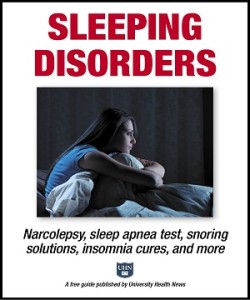How a CPAP Machine Can Help Treat Sleep Apnea…
For moderate to severe obstructive sleep apnea (OSA), your physician may recommend a nasal continuous positive airway pressure (CPAP) machine, which forces air through the nasal passages at a level that prevents the tissues of the throat from collapsing during sleep. For those with less severe OSA or for anyone who can’t get used to the device, a number of CPAP alternatives may be helpful.
A CPAP machine is not a cure for OSA; apneas recur if people use the device improperly or stop using it altogether. But treating severe OSA with CPAP devices may lessen hypertension and reduce the risk of cardiovascular events such as heart attacks and cardiac deaths, according to the Institute of Medicine.
Studies also have shown that proper and consistent use of a CPAP machine reduces blood pressure in people with OSA after two weeks, lowering pressure both during the day and at night, and that CPAP helps reduce daytime sleepiness and depressive symptoms common among people with OSA.
Sleep Better Tonight!
Get a FREE Special Report from the editors of University Health News, Sleeping Disorders: Narcolepsy, sleep apnea test, snoring solutions, insomnia cures, and more.
You’ll read about habits and conditions that rob us of peaceful slumber.
Recent research showed that effectively treating OSA lowers the risk of diabetes. Other studies have found that treating sleep apnea in hospitalized patients with heart disease reduced the rates of both hospital admissions and emergency department visits.
The CPAP machine delivers air through a small mask that fits over the nose or through plastic nasal prongs. The correct air pressure is calibrated after a night in the sleep lab. Some devices can vary the flow of air to match an individual’s specific breathing pattern, while others start out the night with a lower air pressure and slowly increase it, so a patient can fall asleep before the full pressure kicks in.
CPAP machine masks can be uncomfortable and can cause nasal, mouth, and throat drying and irritation as well as irritation of facial skin around the mask (these reasons are why many OSA patients seek out CPAP alternatives).
More rarely, abdominal bloating and headaches may occur, but most people rapidly adjust to these discomforts. There is evidence that patients newly diagnosed with OSA who use a short course of the sleep aid eszopiclone (Lunesta) when beginning CPAP therapy are more likely to stick with therapy for at least six months.
Newer CPAP Alternatives
A new treatment for OSA uses a self-adhesive, one-way resistor device that is applied to each nostril nightly. This disposable device, which produces an expiratory-only positive airway pressure (EPAP), has been shown to effectively treat mild-to-moderate OSA in close to half of people with the disorder.
In one study, investigators found that the device helped ease sleep apnea symptoms by reducing the number of abnormal breathing events, usually by around 50 percent soon after treatment started and by about 40 percent after three months of use. However, it’s not yet possible to predict who will respond best to EPAP.
Another option among recently approved CPAP alternatives is a pacemaker-like device that monitors breathing patterns and is activated during sleep to stimulate the hypoglossal nerve, which controls muscles in the upper airway during inhalations. The device is approved as a second-line therapy, meaning that only patients with moderate to severe OSA who cannot use CPAP can try the implantable device.
Another option: sleep apnea surgery, discussed in a University Health News post you’ll find by clicking here.
Originally published in May 2016 and updated.
The post How a CPAP Machine Can Help Treat Sleep Apnea… appeared first on University Health News.
Read Original Article: How a CPAP Machine Can Help Treat Sleep Apnea… »
Powered by WPeMatico


